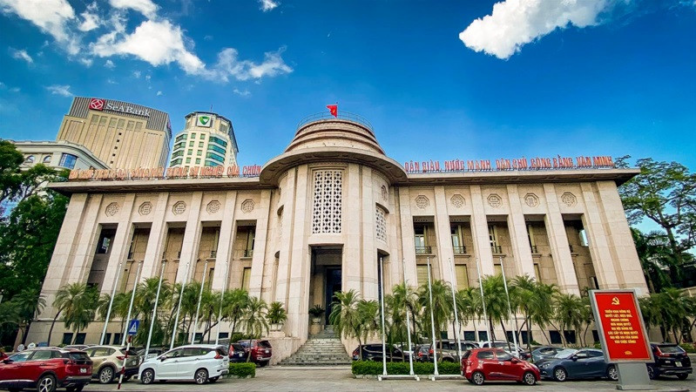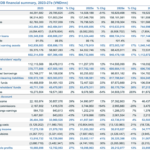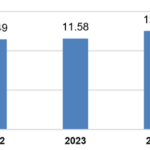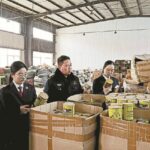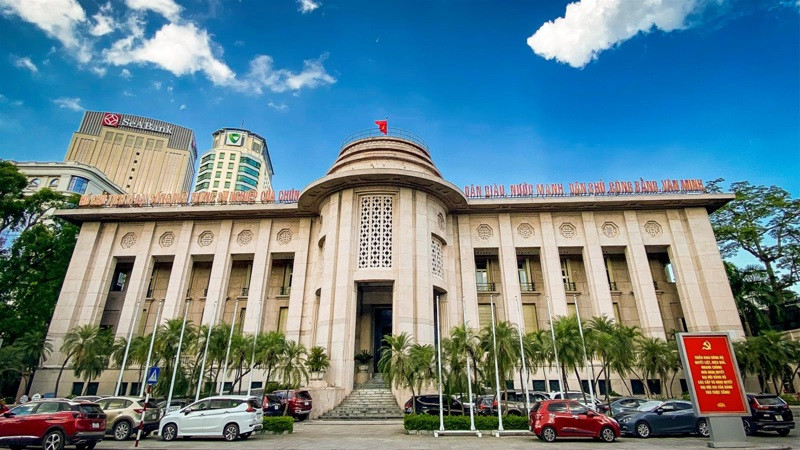
Resolution 226/NQ-CP takes effect from August 5, 2025, replacing Resolution 25/NQ-CP dated February 5, 2025, on the growth targets of sectors, fields, and localities to ensure the country’s growth rate reaches 8% and above in 2025.
The Government sets out key objectives and guiding principles for directing and managing the economy, with a continued focus on promoting growth while maintaining macroeconomic stability, curbing inflation, and ensuring the economy’s major balances, including budget deficit, public debt, government debt, and foreign debt, remain within the limits permitted by the National Assembly. The Government aims for a GDP growth rate of 8.3-8.5% in 2025, with the average CPI increase kept below 4.5%. Total social investment for 2025 is targeted to increase by 11-12%, with approximately 2.8 million billion VND to be mobilized and realized in the last six months. The resolution also emphasizes improving the material and spiritual lives of the people.
The resolution calls for close monitoring of the situation, strong coordination, and the comprehensive and effective implementation of the tasks and solutions outlined. It emphasizes the spirit of unity and innovation in leadership and management, with a forward-thinking, breakthrough mindset. It encourages deep thinking, ambitious goals, and decisive actions with a focus on key tasks. The resolution underscores the importance of assigning clear responsibilities and timelines to individuals and holding them accountable for delivering concrete outcomes with a sense of urgency and dedication to serving the people. It also emphasizes the timely and effective resolution of legitimate concerns and requests from citizens and businesses.
The resolution outlines key tasks and solutions for the coming period, including instructions for ministries, agencies, and localities to develop feasible and effective measures to attract, mobilize, and realize social investment in line with set targets. It urges efforts to disburse 100% of the planned state budget investment capital for 2025, as assigned by the Prime Minister, and to fully disburse the investment capital from the savings and surplus of the state budget in 2024, which is expected to be disbursed in 2025. The resolution sets targets for private investment of approximately 1.5 million billion VND, FDI attraction of over 18 billion USD, FDI realization of about 16 billion USD, and investment realization from other sources of about 165 thousand billion VND.
Specifically, the Government instructs the State Bank to closely monitor the situation and proactively, flexibly, and effectively manage monetary policy tools in coordination with fiscal policy and other macroeconomic policies. It aims to stabilize the monetary and foreign exchange markets in line with market conditions. The State Bank is also tasked with guiding credit institutions to continue reducing costs and striving to lower lending interest rates to support businesses and people’s livelihoods, enhance credit quality, and limit the formation of bad debts. The resolution calls for a transparent adjustment of the 2025 credit growth target, aligning it with controlled inflation objectives to achieve a growth rate of 8.3-8.5% and meet the economy’s capital needs. Credit institutions are directed to control and channel credit into priority production, business, and economic sectors, traditional growth drivers (investment, exports, and consumption), and new drivers, including science and technology, innovation, digital transformation, the digital economy, green economy, circular economy, and social housing. The State Bank is also instructed to prepare monetary policies for the last months of 2025 and 2026 and report to the Government before August 20, 2025.
The Ministry of Finance is instructed to implement an appropriately expanded fiscal policy with a focus on key areas, enhance revenue management, expand the revenue base, and strive for a minimum 25% increase in state budget revenue in 2025 compared to the estimate (and aim for an even higher increase based on the situation). The resolution calls for a 10% reduction in regular expenditures in the last seven months of 2025 to support social security and the construction of boarding and semi-boarding schools for students in remote, border, special, and island areas. It also emphasizes taking advantage of public debt and budget deficit limits to mobilize additional investment resources for key projects in transportation, digital infrastructure, healthcare, education, and culture. The Ministry of Finance is instructed to prepare fiscal policies for the last months of 2025 and 2026 and report to the Government before August 20, 2025.
The Ministry of Industry and Trade, the Ministry of Finance, and corporations are instructed to prepare scenarios and responses to emerging situations, maximize hydropower generation during the rainy season, ensure energy balance and domestic oil and gas supply, and guarantee energy security to meet production and business needs. They are also tasked with preparing plans for power supply and distribution to ensure electricity supply during hot weather and completing procedures for investment, implementation, and operation of large power generation and transmission projects. Immediate adjustments are to be made to certain points in the decrees on the mechanism for direct power purchase between renewable energy generators and large power consumers and the mechanism to encourage the development of rooftop solar power for self-consumption.
To accelerate public investment disbursement, the resolution instructs ministries, agencies, and localities to develop monthly plans, progress updates, and disbursement targets for each investor. It emphasizes the identification and timely removal of obstacles in projects, proactive measures for capital allocation to ensure sufficient capital for implementable and disbursable projects, and progress in key national infrastructure projects. The resolution sets the goal of completing the North-South Expressway on the eastern side, achieving 3,000 km of highways, and striving for 1,700 km of coastal roads in 2025. It also calls for concrete plans and preparations for the groundbreaking of the Lao Cai-Hanoi-Haiphong Railway Project and the high-speed railway project on the North-South axis for site clearance and resettlement in accordance with regulations. Additionally, it emphasizes the timely implementation of projects serving the APEC 2027 conference and other critical infrastructure projects.
International Experts Predict HDBank’s Profit to Surpass 23,000 Billion VND by 2025
In Q2 of 2025, HDBank reported a remarkable pre-tax profit of VND 4,713 billion, bringing its total profit for the first half of the year to VND 10,068 billion. This impressive performance marks a 23% increase compared to the same period in 2024, solidifying the bank’s position among the top-performing financial institutions in the country.
AIG’s Strategic Investment in GC Food: Unlocking Vietnam’s Agricultural Export Potential
In August 2025, Asia Ingredients Group (AIG) proudly announced its strategic partnership with GC Food Joint Stock Company (GC Food). This significant development underscores AIG’s robust growth and reinforces its commitment to propelling Vietnamese agricultural exports onto the global stage.
Crafting Climate-Resilient Project Criteria
This criterion will contribute to refining policies related to climate change adaptation and public investment. It will aid ministries, sectors, and localities in clearly identifying the relevance of projects to climate change adaptation goals, providing a basis for selecting well-focused project proposals.
























